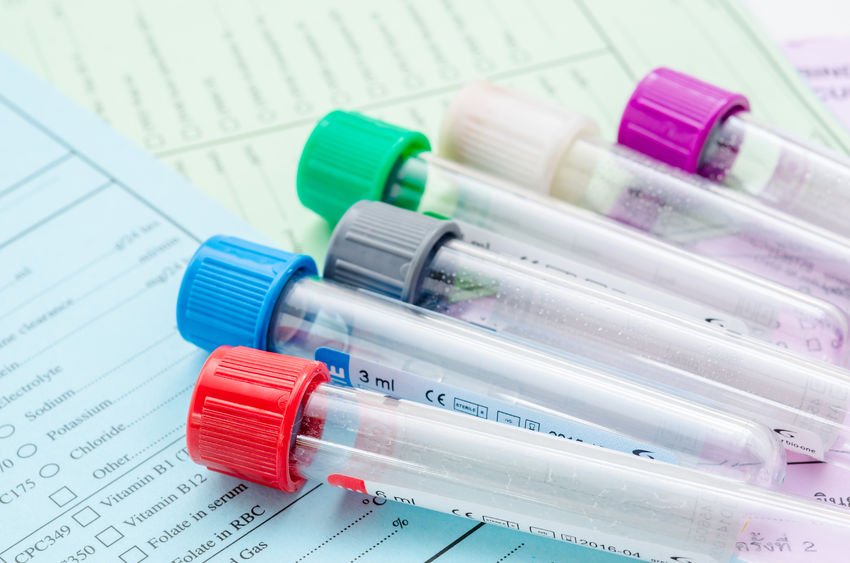
TC DC
Also known as Total Count And Differential Count Automated BloodWhat is this test?
This panel test measures the number of total white blood cells in the blood and the percentage levels of all single type of normal white blood cells present in the blood. It also helps to reveal the presence of any abnormal or immature cells in the blood. White blood cells also called as leukocytes that help to protect the body against infections and foreign invaders, thus an important part of our immune system. These cells are originated from bone marrow but circulate throughout the bloodstream.
There are 5 types of white blood cells: Lymphocytes (B and T cells) Monocytes Neutrophils Basophils Eosinophils
Your doctor may ask to perform this test to rule out any infections, allergic reactions, inflammatory disorders, malignant blood disorders such as leukemia or lymphoma etc. This test is also performed to monitor overall general health, with other blood tests during a routine medical examination. It can also be done to monitor certain disease processes and illnesses.
If the test result falls in the normal reference range generally no medical intervention is necessary.
If your white blood cell count is higher than the normal range then the condition is called leucocytosis. Symptoms of leucocytosis are fever, weakness, tiredness, pain or tingling sensation in your arms, and legs, breathing difficulty, vision changes, weight loss, poor appetite etc. This condition can be due to bacterial, fungal, parasitic or viral infections, allergies, inflammatory diseases such as rheumatoid arthritis or gout, leukemia or blood cancer, whooping cough, or use of medications such as corticosteroids. Individuals who are heavy smokers and those undergoing strenuous exercise, etc. also may have low white blood count in blood.
In most cases, all white blood cells get affected. But there are certain conditions where only one type of white blood cell gets affected. If the levels of only one type of white blood cell are high this may be because of specific triggers. There are five types of leukocytosis based on the type of WBC cells.
Monocytosis: Increase in the number of monocytes is called monocytosis. This may be due to an autoimmune disorder like lupus and ulcerative colitis, bacterial infections like tuberculosis, viral infections, and fungus.
Lymphocytosis: Increase in the number of lymphocytes is called lymphocytosis. This may be due to viral infections, allergic reactions, whooping cough, leukemia etc.
Neutrophilia: Increase in the number of neutrophils is called neutrophilia. This is the most common type of leukocytosis. This may be due to infections, leukemia, injuries, long-term inflammatory conditions such as arthritis etc. Use of medications such as steroids, lithium, and some inhalers can also cause this condition. Smoking and emotional or physical stress due to anxiety, exercise or surgery etc are the other reasons for this condition.
Eosinophilia: Increase in the number of eosinophils is called eosinophilia. This may be due to parasitic infections, lymphoma, few skin diseases, allergies and allergic reactions such as hay fever or asthma etc.
Basophilia: Increase in the number of basophils is called basophilia. This may be due to allergic reactions, leukemia, etc.
Precautions:
Certain medicines that may increase the white blood cell count are albuterol, corticosteroids like prednisone, prednisolone, etc, epinephrine, heparin, lithium, granulocyte stimulating factor drugs like filgrastim, lenograstim, etc. Medications that may decrease the count of white blood cells are antibiotics, antithyroid agents like methimazole, carbimazole,etc, anticonvulsant drugs like phenytoin, diazepam, clonazepam,valproic acid,etc, captopril, clozapine, diuretics like furosemide, hydrochlorothiazide, etc, ranitidine, sulfonamides like sulfamethoxazole, sulfisoxazole, etc, quinidine, terbinafine, ticlopidine, and anticancer drugs.
If you have higher or lower than normal levels of leucocytes or white blood cells, consult your doctor for further instructions. Based on the test results, your doctor may advise appropriate medical treatments, lifestyle modifications, or further diagnostic tests.
Pathology test parameters:
- Lymphocytes count
- Monocytes count
- Neutrophils count
- Eosinophils count
- Basophils count
Also known as TC DC Automated Blood, Total Count and Differential Count.
Test Preparation
Inform your doctor if you are on any medications, have any allergies or underlying medical conditions before your TC DC. Your doctor will give specific instructions depending on your condition on how to prepare for TC DC.
No specific preparation is required for this test. However, if it is performed along with other blood tests, you may need to fast (not eat or drink) for several hours.
Understanding your test results
If your white blood cell count is lower than the normal range then the condition is called leucopenia. Symptoms of leucopenia are high fever, chills, and sweating. This condition is may be due to infections, autoimmune disorders like lupus, tumor or abnormal scarring, bone marrow deficiency or bone marrow failure, liver diseases, certain cancers which damage bone marrow, radiation therapy, anticancer medicines, etc. Deficiencies of vitamins such as vitamin B-12, folate or minerals such as copper, zinc etc also may lead to this condition.
| Gender | Age groups | Value |
| UNISEX | All age groups | 4000 to 11000 cells |
| UNISEX | All age groups | 40-80% |
| UNISEX | All age groups | 20-40% |
| UNISEX | All age groups | 2-10% |
| UNISEX | All age groups | 1-6% |
| UNISEX | All age groups | 1-2% |

